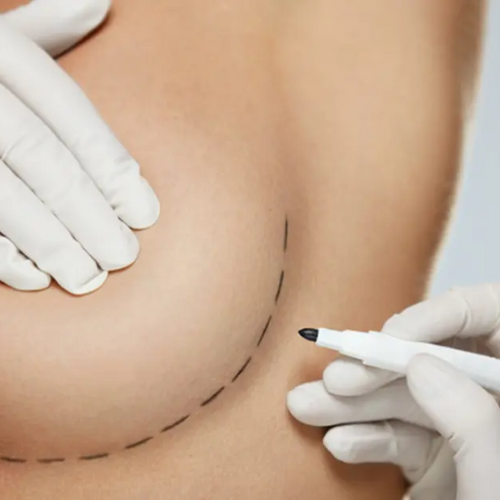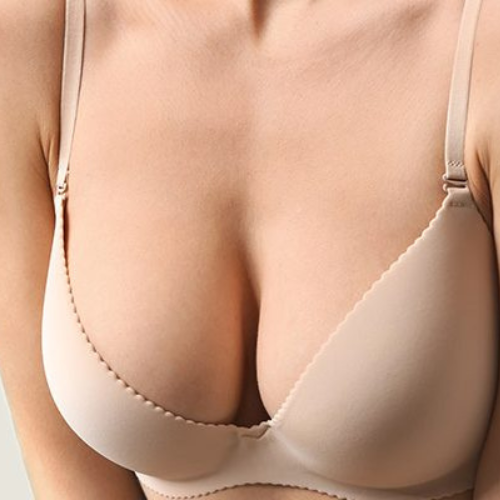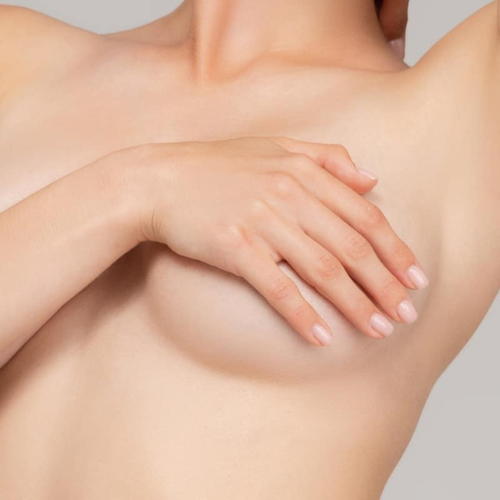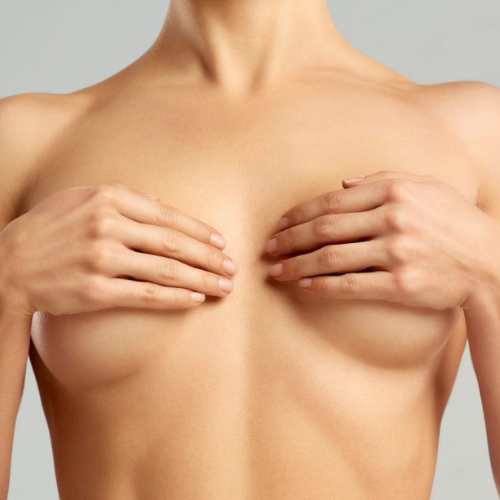Breast
There are many reasons why a woman might seek help for her breasts. They may be too large, causing backache. They may be too small, giving rise to complexes that can be difficult to cope with. Breasts can fall in or become "empty" as a result of pregnancies, weight changes or the effects of the years. Some patients also present significant asymmetries or incomplete development of their breasts. Lastly, surgery may focus solely on the nipples for the treatment of invaginated nipples.
Every problem has its solution. The choice of treatment will depend on many factors. It may combine several of the following techniques. The main objective will always be to make you feel better and to meet your expectations, with a natural result and the simplest possible solution.
Breast hypotrophy
Breast hypotrophy refers to a condition where the breasts are underdeveloped, resulting in a reduced size or shape compared to what is considered normal or expected for the person's age and sex. This can manifest as small, underdeveloped breasts, or significant asymmetry between the two breasts.
The causes of breast hypotrophy can be varied and may include genetic factors, hormonal variations, disorders of breast development, congenital anomalies, nutritional problems or underlying medical conditions.
Women with breast hypotrophy may be concerned about the aesthetic appearance of their breasts, particularly if this affects their self-esteem or self-confidence. However, it's important to note that breast hypotrophy itself is not usually associated with serious health problems.
OUR SOLUTIONS FOR TREATING BREAST HYPOTROPHY
Breast hypertrophy is a condition in which the breasts show excessive development, resulting in a larger-than-normal size or breasts that are disproportionate to the general body morphology. This condition can affect women of any age, and can be a source of aesthetic, functional or psychological concern for some people.
The characteristics of breast enlargement can vary considerably from person to person, but may include:
- Excessive breast size: Breasts are larger than normal, which can lead to physical discomfort, back pain or posture problems.
- Breast asymmetry: Breasts may show significant asymmetry, where one breast is larger than the other.
- Breast ptosis: The breasts may droop or sit low on the chest due to their excessive size.
- Aesthetic problems: Breast enlargement can lead to difficulties in finding clothes that fit comfortably, and to aesthetic dissatisfaction with the appearance of the breasts.
OUR SOLUTIONS FOR BREAST ENLARGEMENT
Breast ptosis
Breast ptosis, also known as "sagging breasts" or "drooping breasts", is a condition in which the breasts lose their firmness and natural position, causing the breast tissue to sink or sag. This condition is common in women and can be caused by a number of factors, including aging, pregnancy, breastfeeding, significant weight loss, or simply gravity.
The characteristics of breast ptosis may vary depending on the severity of the condition, but may include:
- Sinking breasts: The breasts may appear to have sunk or lost their original high, firm position.
- Sagging nipples: Nipples may point downward rather than forward.
- Loss of volume: Breasts may appear less full or have lost volume, especially in the upper part of the breasts.
- Loss of elasticity: The skin of the breasts may lose its natural elasticity, becoming looser and showing folds or wrinkles.
OUR SOLUTIONS FOR TREATING BREAST PTOSIS
Umbilical nipples
Umbilical nipples, also known as invaginated or inverted nipples, are a condition in which the nipples are sunken inside the breast rather than pointing outwards as usual. This condition can be present from birth or develop later in life.
Umbilical nipples can vary in severity, from a slight indentation to a more pronounced inversion. They can affect one or both nipples and can be permanent or temporary, changing shape according to various factors such as temperature, arousal or breast manipulation.
Umbilical nipples can be caused by several factors, including:
- Natural anatomy: In some cases, umbilicated nipples may simply be a natural anatomical feature of the person, with no underlying medical problem.
- Tight breast tissue: Tight breast tissue or a fibrous connection between the milk ducts and surrounding breast tissue can pull the nipples inwards.
- Infections or inflammations: Certain infections or inflammations in the breast can lead to nipple retraction.
- Hormonal changes: Hormonal changes such as those occurring during pregnancy or breastfeeding can temporarily alter the shape of the nipples.
Although umbilicated nipples are not generally associated with serious health problems, they can sometimes cause difficulties for breastfeeding or create aesthetic complexes for some people.
OUR SOLUTIONS FOR TREATING UMBILICATED NIPPLES
Asymmetry - Breast malformation
Breast malformation is a general term used to describe a variety of anatomical conditions that affect the shape, size, symmetry or function of the breasts. These malformations may be present from birth (congenital) or develop later in life due to genetic factors, trauma, hormonal changes or other causes.
There are many forms of breast malformation, and each can have its own characteristics and implications. Here are some examples of common breast malformations:
- Tuberous breasts: Tuberous breasts are a condition in which the breasts have a conical or tubular shape, with a narrow base and nipples often located higher than normal. This condition is due to irregular development of breast tissue during puberty.
- Breast asymmetry: Breast asymmetry occurs when the two breasts differ in size, shape or position. This asymmetry may be slight or significant, and may be due to natural variations in breast development, genetic factors or other causes.
- Breast hypoplasia: Breast hypoplasia refers to insufficient development of breast tissue, resulting in small or underdeveloped breasts. This condition may be present from birth, or develop during adolescence or adulthood.
- Polythelia: Polythelia is a condition in which a person has extra nipples, often located along a line from the armpit to the nipple. These extra nipples may be small and have no developed breast tissue.
- Poland syndrome: Poland syndrome is a rare congenital condition that affects the development of chest muscles and can result in breast asymmetry, breast hypoplasia or absence of breast tissue.
These examples represent only a small fraction of possible breast malformations. Each case of breast malformation is unique, and treatment and management will depend on the specific nature of the condition, and the needs and preferences of the individual concerned.
OUR SOLUTIONS FOR TREATING ASYMMETRIES - BREAST DEFORMITIES
Gynecomastia is a condition characterized by the excessive development of breast tissue in men. It can manifest as breast enlargement, breast tenderness and sometimes even protruding nipples. Gynecomastia may affect one or both breasts, and may be asymmetrical.
The causes of gynecomastia can be varied, and often include hormonal imbalances between male sex hormones (androgens) and female sex hormones (estrogens). Common risk factors for gynecomastia include:
- Puberty: During puberty, hormonal fluctuations can cause temporary gynecomastia in many boys. This often resolves spontaneously over time.
- Advanced age: With age, androgen production declines, which can lead to a relative increase in estrogen and gynecomastia in some older men.
- Use of medication: Some medications, such as certain antidepressants, antiandrogens, anabolic steroids, blood pressure medications and hormone treatments, can increase the risk of developing gynecomastia.
- Medical conditions: Certain medical conditions, such as kidney failure, hyperthyroidism, testicular cancer and certain liver disorders, can cause hormonal imbalances and contribute to gynecomastia.
- Lifestyle factors: Excessive alcohol consumption, use of recreational drugs such as marijuana and exposure to environmental chemicals can also play a role in the development of gynecomastia.











